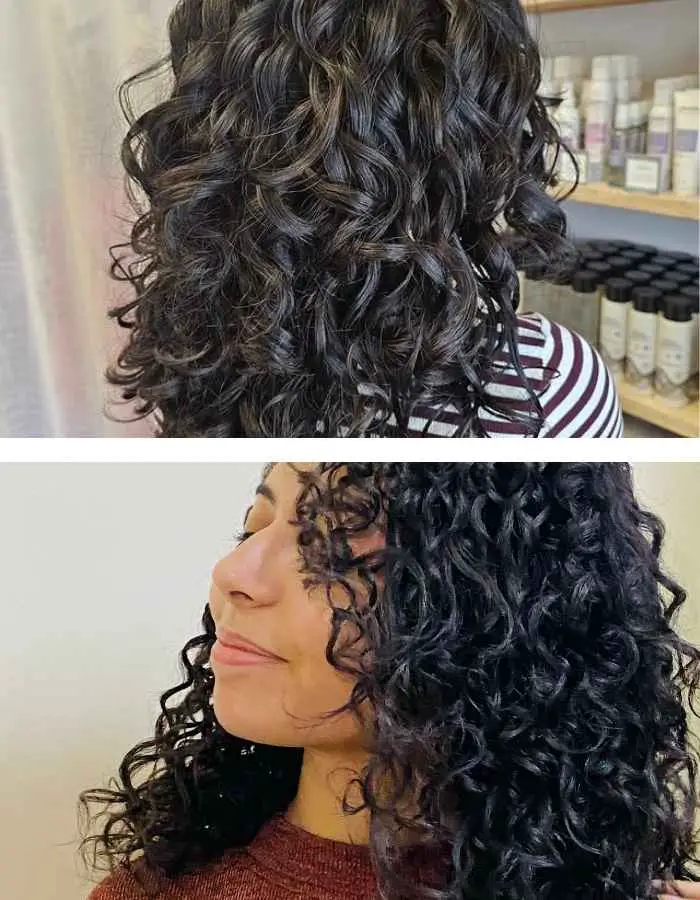Curly hair is beautiful, bold, and full of personality—but it also requires a little extra love to look and feel its best.
If you have loose waves or tight coils, understanding your hair’s unique needs is the first step to keeping your curls hydrated, defined, and healthy.
In this guide, we’ll walk you through a simple yet effective curly hair care routine , share product tips, and help you avoid common mistakes so your curls can truly shine.
Understanding Your Curl Type:
Curly hair isn’t one-size-fits-all—it comes in a range of textures and patterns that influence how you care for it. Knowing your curl type is the first step to choosing the right products and techniques that work best for your hair.
Hair is typically categorized into four main types:
-
Type 1: Straight hair (no curl)
-
Type 2 (Wavy): Loose, S-shaped waves
-
Type 3 (Curly): Defined curls that range from springy to tight
-
Type 4 (Coily/Kinky): Very tight curls or zig-zag patterns, often fragile and prone to dryness
Each category is further divided into subtypes (A, B, and C), which describe the width or tightness of the curl. For example, 3A curls are looser and larger, while 3C curls are tighter and more voluminous.
Understanding your curl pattern helps you:
-
Choose the right level of moisture your hair needs
-
Decide between lightweight or heavier styling products
-
Build a care routine tailored to your hair’s structure and behavior
Take time to examine your hair after it’s washed and air-dried to identify your true curl pattern—this is the foundation for healthy, happy curls!
Advances Curly Hair Care Routine:
Caring for curly hair requires a gentle, moisture-rich routine that enhances your natural curl pattern while minimizing frizz and breakage. Here’s a basic step-by-step curly hair care routine to keep your curls healthy and defined:
-
Cleanse Gently
Use a sulfate-free shampoo or co-wash (cleansing conditioner) to remove buildup without stripping natural oils. Cleanse your scalp thoroughly and let the suds rinse through your ends. -
Deep Condition Regularly
Curly hair thrives on moisture. Use a rich, hydrating conditioner or a deep conditioner at least once a week to restore softness and strength. -
Detangle with Care
Detangle your hair while it’s wet and saturated with conditioner using a wide-tooth comb or your fingers to prevent breakage. -
Apply Leave-In Conditioner
After rinsing, apply a leave-in conditioner to lock in moisture and keep curls hydrated throughout the day. -
Style with Curl Cream or Gel
Choose a curl cream for softness or a gel for hold, depending on your hair needs. Scrunch the product into your curls to encourage definition. -
Dry Without Disturbing Curls
Air-dry or use a diffuser on low heat to maintain your curl shape. Avoid towel drying—opt for a microfiber towel or cotton T-shirt to reduce frizz. -
Protect While Sleeping
Sleep with a satin or silk pillowcase, or wrap your hair in a satin scarf or bonnet to prevent friction and preserve your curls overnight.
This routine can be customized based on your curl type, porosity, and hair goals—but moisture and gentle handling are always key to healthy curls.
Common Curly Hair Mistakes to Avoid:
-
Using Sulfate Shampoos
Sulfates strip natural oils, leaving curls dry and frizzy. Always opt for sulfate-free cleansers. -
Skipping Conditioner
Curly hair is naturally drier and needs consistent hydration. Skipping conditioner can lead to brittle, unmanageable curls. -
Brushing Dry Hair
Brushing curls when dry breaks up the curl pattern and causes frizz and breakage. Always detangle when wet and conditioned. -
Over-Washing
Washing too frequently removes essential oils. Limit washing to 1–3 times a week, depending on your hair’s needs. -
Using Heat Without Protection
Heat styling without a protectant damages curls. Use a heat protectant spray and low settings if you must use heat. -
Not Understanding Your Curl Type
Using products not suited for your specific curl type (wavy, curly, coily) can weigh down or dry out your hair. -
Applying Products Incorrectly
Rubbing products into your hair like shampoo can create frizz. Instead, use the “praying hands” or scrunch method to apply styling products. -
Sleeping Without Protection
Sleeping on cotton pillows causes friction and frizz. Use a satin/silk pillowcase or wrap your hair to keep curls intact.
Tips for Managing Frizz and Humidity:
-
Use Anti-Frizz Products
Opt for serums, creams, or gels specifically designed to fight frizz and lock in moisture. Look for ingredients like glycerin, shea butter, or argan oil. -
Hydrate Your Hair
Well-moisturized curls are less likely to frizz. Use deep conditioners or leave-in treatments regularly to keep your hair hydrated. -
Avoid Over-Touching
Constantly touching your curls disrupts the curl pattern and encourages frizz—style and then leave them be. -
Apply Products on Wet Hair
Sealing in moisture while your hair is still wet helps reduce frizz. Try the “squish to condish” or “rake and shake” methods to define curls while applying product. -
Use a Microfiber Towel or T-Shirt
Traditional towels rough up the hair cuticle, causing frizz. A microfiber towel or soft T-shirt reduces friction and helps curls stay smooth. -
Diffuse with a Low Heat Setting
If using a blow dryer, attach a diffuser and use a low or cool setting. High heat can lead to frizz and damage. -
Seal with Oil or Butter
Natural oils like jojoba or light butters like mango can help seal the hair cuticle, preventing moisture loss and blocking excess humidity. -
Protective Hairstyles
Braids, buns, or twists can keep your hair protected and reduce exposure to humid air. -
Humidity-Proof Your Routine
Use humidity-blocking sprays or anti-humidity finishing sprays as the last step in your routine for added protection.
Key Takeaways:
-
Understanding your curl type is essential for choosing the right products and routine.
-
A consistent curly hair care routine—cleansing, conditioning, moisturizing, and styling—keeps curls healthy and defined.
-
Avoiding common mistakes like over-washing, using the wrong products, or brushing dry hair helps maintain curl integrity.
-
Managing frizz and humidity involves proper hydration, minimal heat, and protective styling.
-
Patience and experimenting are key—what works for one curl type may not work for another.
Read Next: How To Take Care Of Wavy Hair For Beginners
FAQs:
1. How often should I wash my curly hair?
Typically, 1–2 times a week is sufficient to avoid drying out curls.
2. What’s the best brush or comb for curly hair?
Use a wide-tooth comb or your fingers to detangle when hair is wet and conditioned.
3. Can I use regular shampoo on curly hair?
It’s best to use sulfate-free shampoos or co-washes to maintain natural oils.
4. How do I refresh curls between washes?
Use a water-based spray, leave-in conditioner, or curl refresher to reactivate products and reshape curls.
5. Should I use heat styling tools on curly hair?
Minimize heat use. If necessary, always use a heat protectant and choose low-heat settings.
6. What’s the best way to sleep with curly hair?
Use a silk or satin pillowcase, or protect curls in a pineapple bun or bonnet to reduce friction and frizz.



